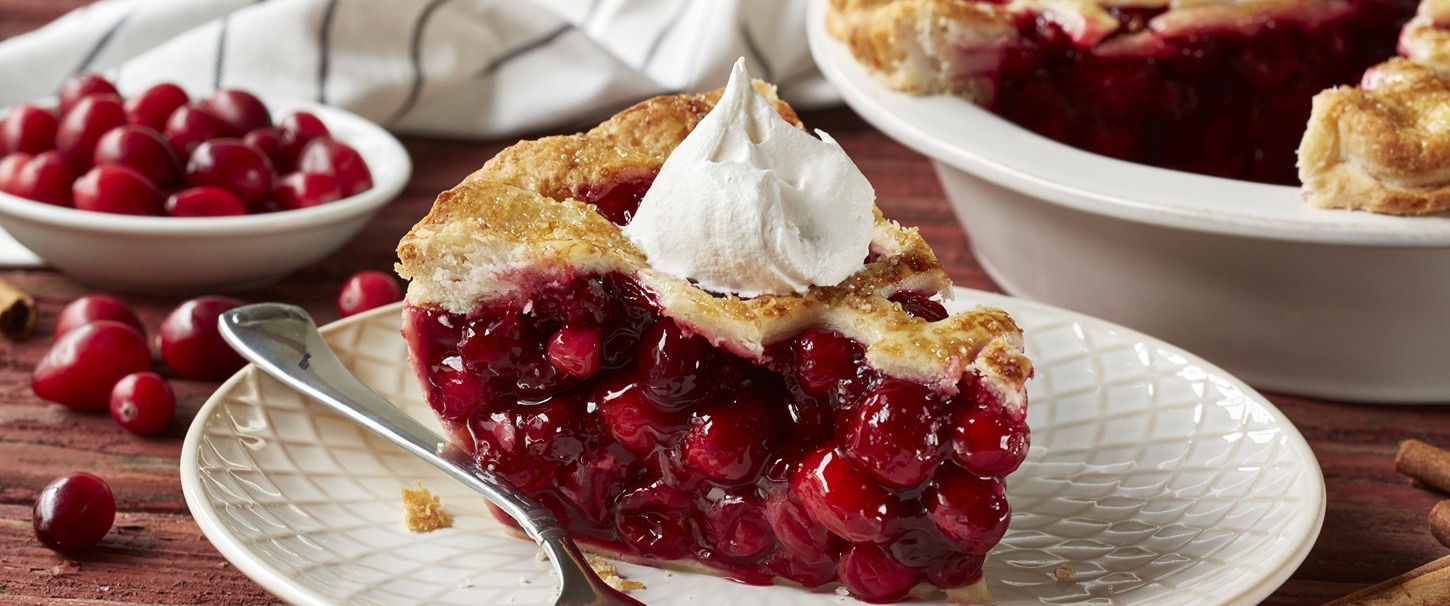
Categories: pies, tarts & cobblers / thanksgiving
Using the Right Pan
The standard size is 9 inches in diameter, although some pie pans are wider. Pie pans come in a variety of materials; if you plan to bake regularly, it’s useful to own several types based on their benefits.
Metal
Conducts heat well and ensures proper browning of the bottom crust. Essential for double-crust pies. Choose high-gauge aluminum, not lightweight disposable pans.
Ovenproof glass
Lets you check the progress of the bottom crust. Conducts heat more slowly; requires a longer bake time.
Ceramic
Results are similar to glass. Unglazed ceramic produces an extra-crisp crust.
Flour
Choose a good-quality all-purpose flour, which is a combination of low-protein cake flour and high-protein bread flour. Make sure it’s fresh—if you haven’t used it in six months, replace it. Remember you’ll be adding flour as you roll out the dough to keep it from sticking, so use a scant amount during the initial mixing.
Sugar and salt
White granulated sugar (between a teaspoon and a quarter-cup) mixed in with the flour promotes browning and adds flavor to an otherwise bland crust. Salt also enhances the flavor.
Water
Make sure it’s very cold (add an ice cube or two to tap water), and add enough so that the dough rolls easily. Stir with a fork until you can press the dough into a rough ball.
Mixing
The object of mixing pie dough is to surround small bits of fat with flour without allowing the fat to soften (which causes the flour to absorb it and yields a tough crust). Use very cold butter and work quickly. Before you add the ice water, pinch a little of the flour mixture between your fingers. Are your fingers greasy? Then the mixture is too soft; refrigerate it for about half an hour before proceeding.
By hand
Helps you develop a sensitivity to the proper texture of the dough. Cut the cold butter into small pieces and rub it very quickly between your fingers. Pick it up, rub it, and drop it until it’s mixed.
With a pastry cutter or two knives
Use a quick slicing motion to cut the fat into the flour until the mixture resembles cornmeal or bread crumbs.
With a food processor
Easy and reliable. Place the dry ingredients in the container and pulse once or twice, using the all-purpose blade. Add the butter, turn on the machine, and process until the mixture resembles cornmeal or bread crumbs.
With a stand mixer
Keeps the dough cooler than other methods. Fit the mixer with the paddle attachment, add the fat all at once, and mix on low speed. Take care not to overmix after adding the ice water, which will lead to a tough crust. And don’t use a hand mixer—it isn’t strong enough.
Rolling Out the Dough
After you’ve mixed the dough, gather it up and press it into a thick, flat disk about 4 inches long and 2 inches thick. Wrap it in plastic wrap and refrigerate it for 20 minutes to an hour. Or roll it out immediately, set it in the pie pan, and chill in the refrigerator for half an hour to three days.



